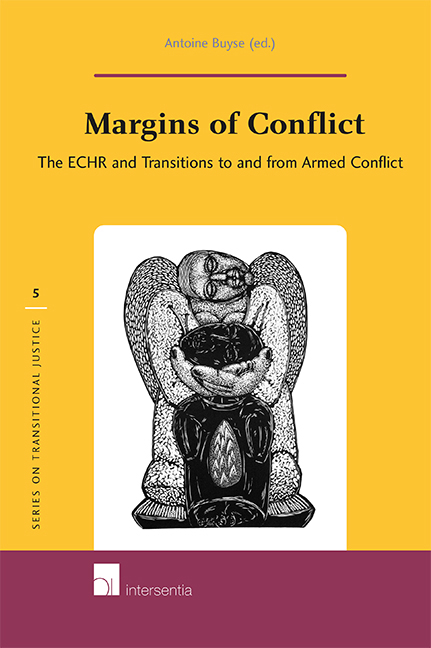Book contents
- Frontmatter
- Preface
- Contents
- Human Rights without Peace? The European Court of Human Rights and Conflicts Between High Contracting Parties
- Crisis Situations, Counter Terrorism and Derogation from the European Convention of Human Rights. A Threat Analysis
- Really Out of Sight? Issues of Jurisdiction and Control in Situations of Armed Conflict under the ECHR
- The Use of Interim Measures Issued by the European Court of Human Rights in Times of War or Internal Conflict
- Foretelling the future, facing the past. Hate speech and conflict situations under the ECHR
- The Duty to Take Preventive Operational Measures. An Adequate Legal Tool to Hold States Responsible in Enforced Disappearance Cases?
- Airborne or Bound to Crash? The Rise of Pilot Judgments and Their Appeal as a Tool to Deal with the Aftermath of Conflict
Really Out of Sight? Issues of Jurisdiction and Control in Situations of Armed Conflict under the ECHR
Published online by Cambridge University Press: 16 December 2020
- Frontmatter
- Preface
- Contents
- Human Rights without Peace? The European Court of Human Rights and Conflicts Between High Contracting Parties
- Crisis Situations, Counter Terrorism and Derogation from the European Convention of Human Rights. A Threat Analysis
- Really Out of Sight? Issues of Jurisdiction and Control in Situations of Armed Conflict under the ECHR
- The Use of Interim Measures Issued by the European Court of Human Rights in Times of War or Internal Conflict
- Foretelling the future, facing the past. Hate speech and conflict situations under the ECHR
- The Duty to Take Preventive Operational Measures. An Adequate Legal Tool to Hold States Responsible in Enforced Disappearance Cases?
- Airborne or Bound to Crash? The Rise of Pilot Judgments and Their Appeal as a Tool to Deal with the Aftermath of Conflict
Summary
INTRODUCTION
To what extent does the European Convention on Human Rights (ECHR) apply to armed conflict? The overwhelming majority of complaints before the European Court on Human Rights relates to incidents in otherwise peaceful situations: undue delays occurring in civil proceedings, decisions to place children into public care or disputes concerning the presence of crucifixes in State schools, for example. One might therefore be inclined to assume that the ECHR standards are not designed for the rough circumstances of warfare. And indeed, they are not suited: decades of careful tendering by the Strasbourg judges have resulted in rights that are simply too delicate for the battlefield. The realities of war have led to the development of a separate branch of law, i.e. international humanitarian law, which has clear similarities to human rights law but is specifically designed to protect the vulnerable in situations of large-scale violence.
On the other hand, the text of the Convention does not reserve human rights for situations of peace and stability. Quite the opposite: the very existence of Article 15 ECHR, which allows for derogations in times of war or public emergency, shows that the drafters presumed that the Convention would continue to apply in situations of armed conflict. Indeed, in actual practice the Strasbourg judges have not been confined to a haven of brotherhood and tranquillity. It depends, of course, on our understanding of what is an ‘armed conflict’, but arguably the very first case before the Strasbourg Court – Lawless v. Ireland – was exactly about the significance of the Convention in a sometimes very violent situation. Since then, the troubles in Northern Ireland, the conflict between Turkey and the PKK, and the Chechen wars in the Russian Federation have given rise to extensive case law.
Against this background, the present contribution will focus on a sub-species of Strasbourg case law. Luckily – for us, that is – conflicts tend to occur outside the territories of the 47 Member States of the Council of Europe. May we assume that the Convention continues to bind the Member States when they become involved in ‘out-of-area conflicts’? Or is it ‘out of sight, out of mind’? The wellknown case of Bankovic (2001) offered a first occasion for the Strasbourg Court to address this question in considerable detail.
- Type
- Chapter
- Information
- Margins of ConflictThe ECHR and Transitions to and from Armed Conflict, pp. 57 - 76Publisher: IntersentiaPrint publication year: 2010



